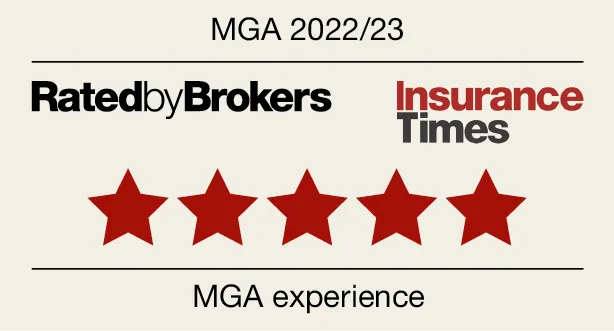-
Can you insure commercial projects?Broker | Project Professionals | Renovator |
-
Yes, we can insure these types of commercial projects:
- Works to domestic structures / new build domestic structures for profit (sale / investment property)
- Conversions of commercial structures (for example, office blocks) to multi-occupancy residential
- Commercial re-fits / extensions
- Commercial new-builds
- Works occurring at schools and other public structures
We can’t insure:
- Works to modern industrial structures
-
Can you insure self-build projects?Broker | Project Professionals | Renovator |
-
We can insure:
- Self-managed – where the property owner is managing a series of contractors, but not undertaking the works with his/her own hands
We can’t insure:
- Pure self-build projects – where the property owner is physically undertaking the work, whether this includes additional labour sourced elsewhere or not
With a self-managed project, in addition to the standard risk information requested on our proposal form we also need to know:
- What project management experience the self-builder has.
- Who is responsible for health and safety on site?
- Whether the CDM regulations apply?
If it transpires that a self-builder has limited experience, and has not adequately considered the H&S implications and CDM regulations, then we may decline the risk.
-
Do I need Project Liability insurance?Broker | Project Professionals | Renovator |
-
We always provide a minimum of Property Owners Liability (POL) insurance. When you come off risk with the existing building insurer, the POL cover will also be cancelled. We will re-instate this cover. It will indemnify the property owner for injury/loss stemming from ownership of defective property/land and additionally and it will provide legal defence costs in the event that the property owner is named as a co-respondent in an action against the contractor.
Please note that this insurance will not cover a property owner for injury/loss stemming directly from the performance of contract works. It is only appropriate where there is a main contractor who is in full control of the site and fully responsible for the management of contractors and H&S on site.
Where a property owner does have a role in the ‘project management’ function (particularly where there is no main contractor in full control of the site), then wider Project Public Liability (PL) cover is required. This cover will indemnify a property owner for contract works related loss and injury. We see a fair few projects where renovators opt not to appoint a main contractor, but rather, manage a series of bona-fide sub-contractors. In these circumstances, whilst the contractors are likely to hold their own insurances, it is appropriate for the renovator to hold his/her own project PL cover. Apart from anything else, it may be the contractors themselves who are injured whilst performing activities directed by the renovator.
Project Employers Liability (EL) insurance will only be required where the renovator is directly employing labour-only sub-contractors, casual labour and/or volunteers.
Where Project PL or Project PL/EL is required, we will require additional information around project management experience and risk management on site. We will request this information once we have established the need for these heads of cover.
-
What does the policy actually cover?Broker | Project Professionals | Renovator |
-
Renovation Portfolio is an All Risks contract works package. We can cover the following:
- The Contract Works (compulsory)
- The Existing Structure (optional)
- Property Owner’s Liability (compulsory where Existing Structure insured)
- Project Public Liability (where Property Owner’s Liability is not enough)
- Employer’s Liability (only where Project Public Liability is insured)
- Non-negligent Liability (Party Wall Insurance)
We do not cover existing structure cover in isolation. As an ‘All Risks’ contract, we offer the full range of perils under both sections, including subsidence, accidental damage, and damage caused by the contractor.
Cover automatically ceases at the point of practical completion or the expiry of the policy. It’s important to ensure that an extension is requested if relevant, and that a standard buildings insurance product is lined up as the end of the project approaches.
-
Are contents covered in this insurance?Broker | Project Professionals | Renovator |
-
We are able to offer contents insurance – but bear in mind that it is never the intention of a contract works product to offer high net worth contents insurance. We are happy with general contents, but we cannot offer cover for high-value assets such as jewellery, collections, fine art, antiques and the like. There are also inner limits for things such as electronic equipment and contents stored in outbuildings, and we will not cover contents away from the premises.
We can offer more bespoke contents cover subject to referral, but it is always worth seeking ongoing cover from the existing contents market because it will generally be significantly wider.
We would draw a distinction between contents and materials and fittings. In simple terms, we would class materials and fittings as anything which will be attached to the building (such as tiles, bathroom fittings, piping, flooring, light fittings etc.). We class contents as anything which will remain loose (such as furnishings and sort furnishings, rugs, curtains and so-forth). Materials and fittings should be included within the contract works sum insured.
-
What is Party Wall Insurance?Broker | Project Professionals | Renovator |
-
Party Wall Insurance (also referred to as non-negligent, 21.2.1 or 6.5.1 insurance – it’s all the same thing) is a type of liability cover which is designed to meet a renovator’s obligations and liabilities under the Party Wall Act.
The Act imposes a ‘strict liability’ on renovators for certain heads of structural damage to neighbouring property stemming from the works. Because the liability is strict, it is not necessary for the neighbour to demonstrate negligence. Because of this, it is not possible to rely exclusively on a contractor’s liability insurance to cover damage to neighbouring property.
In a loss situation, the relevant insurers will establish first and foremost, whether negligence has been present, and this will dictate which policy deals with the claim. Where negligence is present, then the contractor’s liability insurers will be on the hook. Where there is no demonstrable negligence, the party wall insurer will take the claim forward. There are certain key exclusions:
- Damage which is the result of negligence
- Damage which can be reasonably foreseen to be inevitable
- Damage resulting from defective design/materials
In addition to protecting third party property from structural damage, the cover extends to include damage to areas of the policyholder’s own property not being worked on.
This is a risky class of business to write. We see a disproportionately high volume of claims under this head of cover. In addition, the underwriting is technical and complex. With this in mind, it is essential that we are provided with thorough risk information. If this guidance is not followed, then the quotation process is likely to be long and frustrating for all involved, and the terms are likely to be less favourable.
This cover is available whether or not the works in question are notifiable under the Party Wall Act, and whether or not there are actual party walls. It is sufficient that there are structures in the vicinity of the works which are at risk.
-
What is a JCT Contract?Broker | Project Professionals | Renovator |
-
The JCT suite of contracts are well understood, and frequently utilised set of ‘off the shelf’ contract terms which manage the relationship between a contractor and the employer (i.e.; the renovator/property owner). Within these contracts, there are clauses dealing with insurance. Our product has been designed to dovetail with the requirements of the JCT contract, and in particular, we are able to offer ‘joint names’ insurance for existing structure and works.
The joint names requirement is a feature of the JCT suite. It requires that both the contractor and the employer are named policyholders on not just the contract works insurance, but also the buildings insurance. Noting the contractor as a joint insured precludes the insurer from subrogating against the contractor in the event that he negligently damaged the buildings or the works. The standard property market will not offer this cover. Where joint names requirement exists under contract, a renovator will need to purchase specialist cover of the type we offer to avoid serious difficulties at claim time.
There are various forms of this contract:
- JCT Homeowner – the most basic form. Suitable for small, straightforward projects
- JCT Minor Building Works – Suitable for larger projects, but where the works remain relatively straightforward
- JCT Intermediate – for larger, more complex projects
- JCT Standard – able to cope with massive developments. Rarely used on all but the largest of domestic projects
There are various insurance options. We will offer advice around which options are appropriate for any given project.
-
What does this insurance cost? Why does it cost so much?Broker | Project Professionals | Renovator |
-
When answering this question, the starting point has to be that, if you are comparing the cost of this cover to the cost of standard buildings insurance, you are comparing apples to oranges. Our package is not buildings insurance, it is contract works insurance. We cover not only the structure, but the capital investment in the refurbishment works too (the contract works).
In addition to the fact that we offer an additional head of cover, the simple fact is that a construction site is a much riskier proposition to insure than an occupied dwelling or commercial structure. The potential for loss (particularly under the heads of accidental damage, theft, escape of water and fire) is much, much higher.
Also, in many cases, the insurer is also giving up their right to subrogate against the contractor in the event that they damage the structure and/or works. All of these factors generate upwards pressure on the rating.
It is possible to insure a building project more cheaply, but any premium savings will invariably come at the expense of cover, control and peace of mind.
-
What happens if a project overruns and we come to the end of the insurance period, but the project hasn’t finished?Broker | Project Professionals | Renovator |
-
Our product is a non-renewable, single period package which is designed to offer cover for the duration of the works. We will offer a contract term based on the projected duration of the project. Our policies can be purchased for as little as three months, of for multiple years in one hit.
In the event that the project duration is underestimated (and this happens a good 85% of the time) we are able to extend the policy. We can extend multiple times, but please be aware that we will eventually apply administration fees if we find ourselves extending over and over again. It is important to be realistic about the time it is going to take to achieve practical completion on a project before the works start, to avoid excess stress and additional insurance admin fees.
-
What happens if the cost of works has been under-estimated?Broker | Project Professionals | Renovator |
-
Like all material damage policies, Renovation Underwriting policies are subject to the condition of average. If the sums insured are significantly understated, then the condition of average will apply.
A policy does include automatic uplift under both the buildings and works heads of cover. If the disclosure of sums insured at inception can be shown to have been reasonably and fairly estimated, then the policyholder will benefit from this protection in the event of a claim – if it transpires that the sums insured have been accidentally understated.
For larger projects, particularly when high-end fit outs will occur, it is often not possible to accurately estimate the final spend. In these circumstances, we can issue the cover on a declaration basis.
If you become aware that a project is costing significantly more than anticipated, please let us know. We can increase the works sum insured by endorsement at any time.















